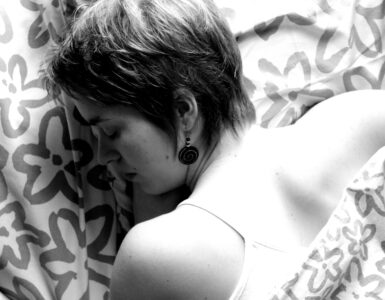Arthritis in very simple explanation is joint inflammation. Inflammation means swelling, pain and stiffness. A joint is the connection of two or more bones in the human body for example the hip, knee, or fingers. Arthritis comes in many different forms. Here is and overview of the types and causes of arthritis.
Bones
The bones of a joint are usually covered with smooth soft material like sponge called the cartilage that provides protective cushions to the bones to allow them to move without pain. The joint is wrapped into a fibrous enclosure called the synovium. This is a lining producing slippery fluid that nourishes the joint to help limit friction. To help keep the joint stable . ligaments connect the bones and with the help of muscles and tendons you can move easily without feeling pain in the bones.
What Causes Arthritis?
Sometimes an area around the joint or in the joint becomes inflammed for many different reasons we will discuss below. Such inflammations cause pain and stiffness causing a lot of difficulties in day-to-day movements. All joints in the human body can suffer arthritis. It is impossible to predict which joints exactly or how many of them are vulnerable to this condition.
Types of Arthritis – Types and Causes of Arthritis
There are more than hundred types of arthritis. The main and most known ones are below.
Osteoarthritis
This is cartilage wear and tear. This occurs when the cartilage that protects the bones wears out significantly to alow the bones to rub against each other and the resulting friction causes pain and discomfort. This may lead to swelling as well. Although Osteoarthritis may affect any joint, it will most likely affect the weight bearing joints such as the knee, hips, and facet joints. Osteoarthritis is also referred to as degenerative joint disease.
Rheumatoid Arthritis
Most commonly involves the hands, wrists, and knees. In this case the immune system mistanly attacks itself thus causing the joint lining to swell. This inflammation eventually spreads throughout surrounding tissues and damage cartilage and bones. In worse cases Rheumatoid Arthritis is known to affect areas such as eyes, lungs and nerves as well. This condition is three times more common in women than men. It could be related to hormones (Oestrogens) as research have suggested. But this is not proven so far.
Gout
When the human body struggles to eliminate natural substances called uric acid, the excess form needle like crystals in the joints. this causes swelling and pain. Gout mainly affects the big toe, knee, and wrist joints.
Symptoms of Arthritis – Types and Causes of Arthritis
Symptoms may vary depending of the type of arthritis. Generally, fatigue, fever, rash and joint inflammations are the first symptoms that you should feel.
The causes of Osteoarthritis?
Osteoarthritis is something that occurs through aging. When the body gets older, water content of the cartilage increases and protein amount in cartilage degenerates. At this point your joints have been used so much that it’s likely to face wear and tear. Cartilage begins to flake and tiny crevasses are formed. Cartilage cushion starts to wear out between the bones and this causes friction between the bones leading to pain and discomfort. This damage can encourage new bones to grow from around the joints. Osteoarthritis can also be hereditary.
Osteoarthritis can also be caused by other conditions like repeated surgeries on the joints, abnormal joints at birth, obesity, diabetes, and other hormone problems.
Obesity causes osteoarthritis by putting a lot of weight on the cartilage. It is considered one of the most powerful risk factor especially for the knees.
The Causes of Rheumatoid Arthritis
Although the exact cause of this condition is till unknown, research suggests that this may be triggered by infections or virus attack. Rheumatoid Arthritis is an autoimmune condition which cases the body’s immune system to attack itself. In case of rheumatoid arthritis, your immune system sends antibodies to the lining of your joints where they attack the tissues surrounding your bones and joints instead of attacking the viruses or bacteria causing the harm. This condition can be hereditary that means it runs in the family and therefore your genes may be a key factor of the cause. However, it is important to note that having a family member with rheumatoid arthritis does not mean you will inherit the condition. Even an identical twin of someone with this condition has a fifth of a chance of developing it. So gene can be a factor but does not explain much of the risk.
The Causes of Gout
An excess of Uric Acid in your body can cause the development of gout. Uric acid is a common chemical that is present in blood for everyone. It is a byproduct formed from substances like purines which exist in the cells and certain foods. Purines when broken down from food by the body causes uric acid. It is also formed when old cells are broken down to be replaced by new cells in the body.
So, what causes uric acid excess in the bloodstream?
- Your kidneys don’t process uric acid fast enough
- Your body produces too much uric acid
So, an excess in this substance causes tiny crystals to gather in your tissues especially in and around the joints. The crystals are usually formed at cooler temperatures hence why gout is more common in fingers and toes.
However, it must be noted that some people may have high levels of uric acid and still not get gout and vice versa. Research is still being performed to understand why some people get this condition and why some not.
Factors that increase likelihood of gout disease
- Men aged between 30 to 60
- Women going through Menopause
- Diet consisting of red meat, seafood
- Too much alcohol especially beer
- Not enough fluids intake, dehydration
- Too many medicines like diuretics (water tablets) increase the flow of urine from the body
- Inherit from family
- Kidney malfunction. Kidneys don’t pass enough uric acid out of the body
- Have psoriasis (itchy dry and flaky skin) , which causes too much uric acid.
- Cancer medications
Does Cracking Joints Cause Arthritis? – Types and Causes of Arthritis
Negative pressure pulling nitrogen gas temporarily into the joint causes joint cracking. It is not harmful as it’s just a minor adjustment of tissues in their gliding paths. But if you feel pain after cracking there could be some problems such as loose cartilage ot injured ligaments.
Researchers from the Informed Services University of Health Sciences, Bethesda, Maryland USA carried out a study called “Knuckle Cracking and Hand Osteoarthritis”. Senior author Kevin DeWeber explained that previous studies had shown no link between knuckle cracking and hand osteoarthritis.
The research concluded that total duration and total cumulative exposure to habitual Knuckle cracking does not seem to be a risk factor for hand Osteoarthritis but it may decrease hand function. Therefore, habitual knuckle cracking should be discouraged.
How to treat Arthritis? – Types and Causes of Arthritis
Given the unpredictable nature of this disease, it is difficult to treat. But there are various remedies that are known to ease the pain and discomfort caused by arthritis. It is important to visit your doctor regularly during medication as the medicine may need adjustments from time to time depending on how the condition is.
Medication
About Analgesics
Analgesics are drugs designed specifically to relieve pain. There are several types of analgesics: acetaminophen (Tylenol), which is available without a prescription, and a variety of opioid analgesics, which are available only with a prescription.
About Biologics
Biologics, or biologic response modifiers, are medications genetically engineered from a living organism, such as a virus, gene or protein, to simulate the body’s natural response to infection and disease.
About Corticosteroids
Corticosteroids, sometimes called glucocorticoids, are medications that mimic the effects of the hormone cortisol, which is produced naturally by the adrenal glands.
About DMARDs
Disease-modifying antirheumatic drugs slow or stop the inflammatory process that can damage the joints and internal organs.
About NSAIDs
NSAIDs are used to relieve pain and inflammation associated with arthritis and related conditions. They are also have many uses outside of arthritis treatment, such as lowering fevers, easing tooth aches, and relieving muscle aches from strenuous physical activity or the flu.
About Other Drug Types
Other drug types for arthritis include: Forteo, hyaluronic acid injections, prolotherapy for knee OA and more.
Occupational Therapy – Types and Causes of Arthritis
Occupational Therapy is the process of getting help to perform daily tasks with the help of personalised gadgets or adaptations to make life simpler and easier. An Occupational Therapist will assess you and identify what activities you find painful due to joint pains and will offer you advice and adaptation programs on how to go about with these tasks in daily life without causing more damage and protecting your joints. You may receive special equipments to help you with the therapy.
Splints may also be provided to support and protect joints that are affected by arthritis. You will also have follow up sessions every week or month to check on your progress during occupational therapy.
Physiotherapy
Physiotherapy is an important process for effectively managing arthritis. Physiotherapists have good understanding of the body and its movements. They help people with limited mobility to provide advice and guide them to doing effective exercises that will help patients build their flexibility and strength. People with arthritis are highly encouraged to perform exercises frequently to avoid pain and swelling in their joints.
Physiotherapists will usually examine your posture, muscles, and other movements during your consultation, and then set up a plan of action on what you need to do on a daily basis as in simple exercises that will ease the pain and swelling from arthritis.
Podiatry – Types and Causes of Arthritis
Podiatry or chiropody is a specialist treatment that deals with foot care. Arthritis can also affect the foot making it difficult to walk and stand properly. In this case a chiropodist is required to give you advice and consultation. The specialist will analyze the way you walk, usually called a gait analysis and then assess your range of motion, pressure you apply on the foot when walking, forces of the joints. They will then provide special equipment to support your feet.
Complementary Therapies
These include popular therapies like:
- Acupuncture
- Aromatherapy
- Chiropractic
- Homeopathy
- Massage
- Yoga
They do no cure arthritis but they do help in easing the
pain and symptoms
Before you think about getting into these activities, please follow these
simple guidelines to help you.
- Ask your GP first if it is safe to engage in such activities
- Ask your complementary therapist about the cost and length of the therapy to make sure you can afford it
- Check if they have insurance in case of accidents or something goes wrong
- Don’t stop on your prescribed medication if you are taking any medications for arthritis
- Inform your complementary therapist about your prescribed drugs
Surgery – Types and Causes of Arthritis
In worst case scenarios, a surgery may be required to
- Replace a badly damaged joint with an artificial joint.
- Removing the inflamed lining of the joint area
- Releasing trapped nerves
- Fusing in a joint to make it more stable.
Joint Replacements
Joint replacements are probably the most common surgical procedure for arthritis. It was estimated that 65000 hip replacements and 68500 knee replacements were performed in the UK during 2006-2007. Joint replacements are usually very successful and guarantee a lifetime of at least 10 – 15 years.
Health and Social Professionals to Contact for Arthritis Treatments
- Chiropodists
- Chiropractors
- Occupational Therapists
- Orthopaedic Surgeons
- Orthotist
- Osteopath
- Paediatrician
- Phlebotomist
- Physiotherapist
- Prosthetist
- Radiographer
- Rheumatologist
- Social Worker
Sources: Arthritis Foundation



